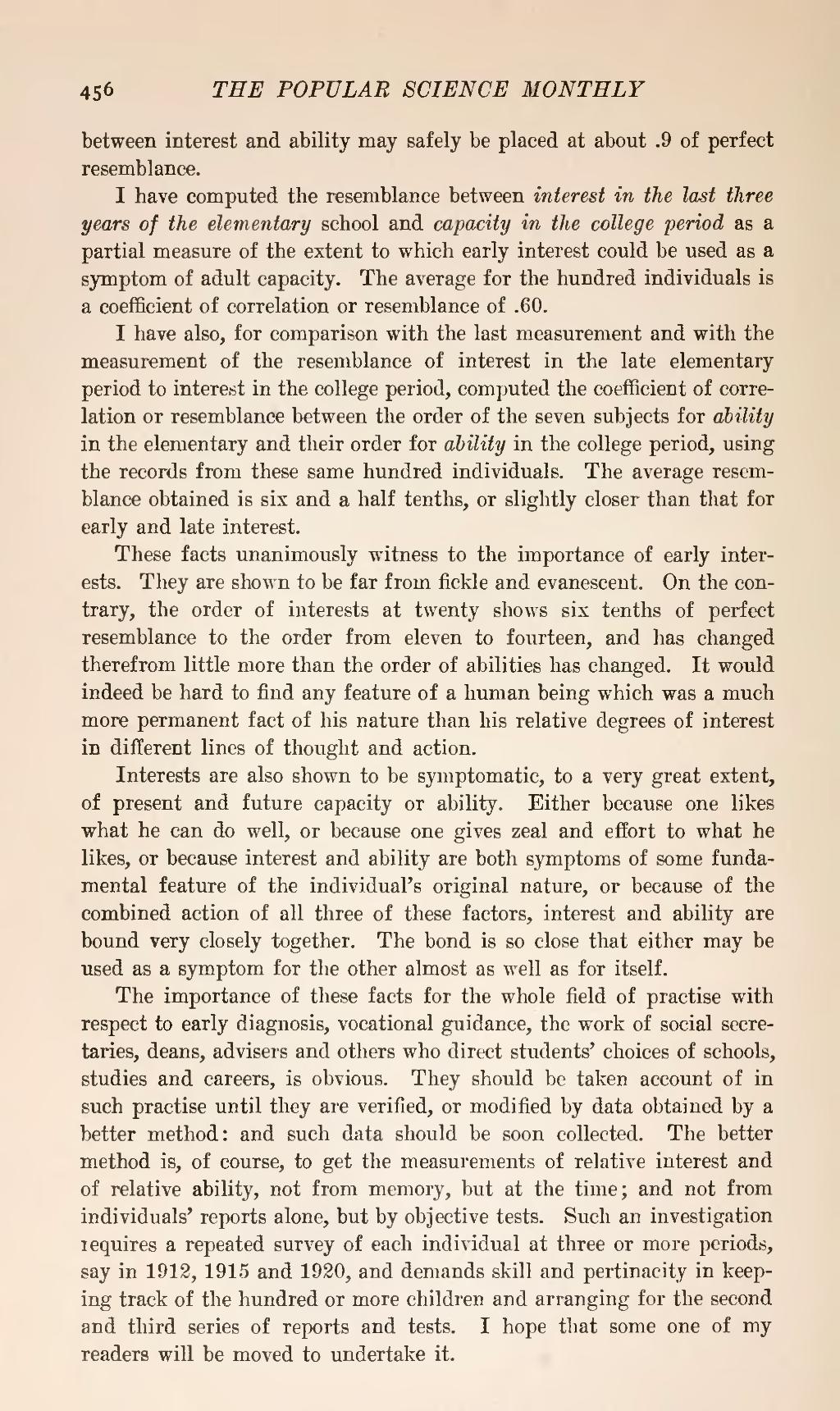between interest and ability may safely be placed at about .9 of perfect resemblance.
I have computed the resemblance between interest in the last three years of the elementary school and capacity in the college period as a partial measure of the extent to which early interest could be used as a symptom of adult capacity. The average for the hundred individuals is a coefficient of correlation or resemblance of .60.
I have also, for comparison with the last measurement and with the measurement of the resemblance of interest in the late elementary period to interest in the college period, computed the coefficient of correlation or resemblance between the order of the seven subjects for ability in the elementary and their order for ability in the college period, using the records from these same hundred individuals. The average resemblance obtained is six and a half tenths, or slightly closer than that for early and late interest.
These facts unanimously witness to the importance of early interests. They are shown to be far from fickle and evanescent. On the contrary, the order of interests at twenty shows six tenths of perfect resemblance to the order from eleven to fourteen, and has changed therefrom little more than the order of abilities has changed. It would indeed be hard to find any feature of a human being which was a much more permanent fact of his nature than his relative degrees of interest in different lines of thought and action.
Interests are also shown to be symptomatic, to a very great extent, of present and future capacity or ability. Either because one likes what he can do well, or because one gives zeal and effort to what he likes, or because interest and ability are both symptoms of some fundamental feature of the individual's original nature, or because of the combined action of all three of these factors, interest and ability are bound very closely together. The bond is so close that either may be used as a symptom for the other almost as well as for itself.
The importance of these facts for the whole field of practise with respect to early diagnosis, vocational guidance, the work of social secretaries, deans, advisers and others who direct students' choices of schools, studies and careers, is obvious. They should be taken account of in such practise until they are verified, or modified by data obtained by a better method: and such data should be soon collected. The better method is, of course, to get the measurements of relative interest and of relative ability, not from memory, but at the time; and not from individuals' reports alone, but by objective tests. Such an investigation iequires a repeated survey of each individual at three or more periods, say in 1912, 1915 and 1920, and demands skill and pertinacity in keeping track of the hundred or more children and arranging for the second and third series of reports and tests. I hope that some one of my readers will be moved to undertake it.

